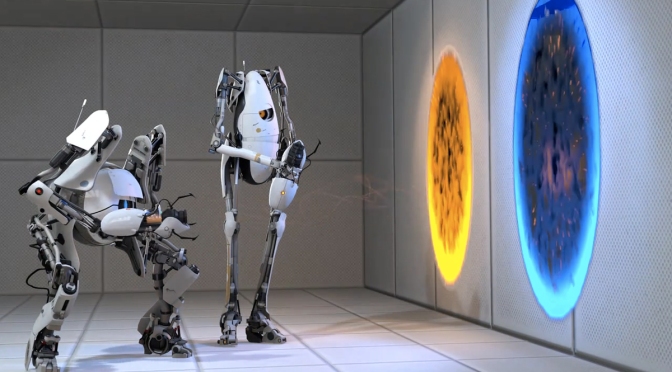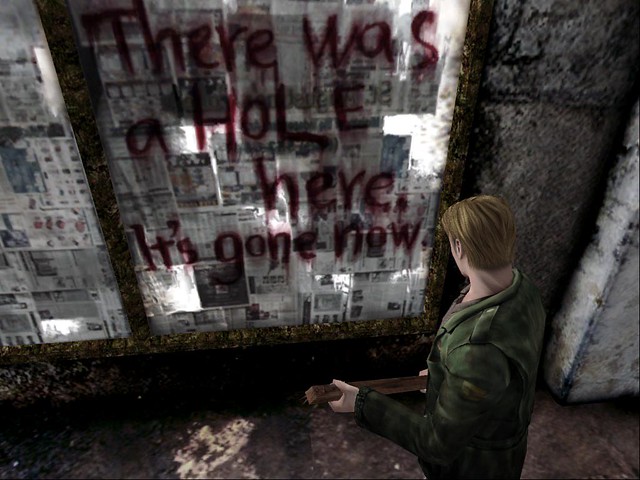[This post was originally published by Plus10Damage September 17, 2013.]
“I was me.”
That’s the essence of many personal narrative games, and @Rokashi’s I’m Fine is no exception. Those aren’t the literal first words, but it’s absolutely the first thought. I was myself. Those of us that have trouble being ourselves — or embracing the idea our “selves” are not such shameful things after all — have been finding a home on the Internet. More specifically, the ones that like games have been finding a home in the home-brewed Twine community. We’ve been able to experience stories like Memorial, Kim’s Story, and Intake, just to name a few. There’s a veritable sea of them out there, and that sea is only going to spill further and further into the public consciousness.
Here’s why that sea matters: these stories are intensely personal, but they’re not just being told — they’re being played.
What this means is that, instead of just yelling a wall and hoping that the wall has an emotional response — which is risky — the vulnerable author here is telling a story by letting the player experience the story. Instead of saying “this happened to me” while you’re reading / playing I’m Fine, Rokashi will sometimes just say “this happened to you.” The addressed person changes from time to time, making it difficult to tell whether the story is happening to someone else, or to you.
That, at the end of the day, is at least one of the points of personal games. To help understanding, even a tiny bit, through empathy.
Well, games give choices. This is, of course, not the only thing that games can do to increase empathy or connection with a character, but it’s certainly one of the most fascinating. Games that Make the Big Money — Mass Effect, Bioshock, Fable — often have millions of public-relations-rave-parties in celebration of “meaningful choices,” which usually end up being something along the lines of save the world / blow up the world. Of course, those are meaningful. Yeesh. So meaningful. That sort of choice is a big deal. But those aren’t the decisions, the illustrative character choices, by which I am so recently thrilled.

Near the end of the aforementioned Kim’s Story, we’re given the chance to judge the author. “Do you think I’m pathetic?” That’s the question, and it’s a yes or no. No grey. No moral argument. Just a simple question. And, based on the story that precedes that question, making your choice is terrifying. Do you choose with honesty? With contempt? Do you pander? Does anybody even know what you choose? The point is not which choice is correct, but rather that Kim made you, the reader, judge. You had to pause, you had to think, and you had to pass judgment in order to continue the game.
That’s one thing a game can do that a book never can; content is literally withheld until the player moves.
Here’s another thing: games can use theoretical choices to illustrate character, in a way that feels clumsy or awkward in written fiction / film. I’m Fine will serve as a lovely example in this case, as the choices you make in the story are almost the polar opposite of “meaningful.” In the sense that Mass Effect uses the word, that is.
Look down there. It’s a choice.

None of these decisions really have any effect on the outcome of the story. Certainly not in a universe-changing, Biowarey sort of way. These options serve a different purpose. As the player, when I’m offered these choices, I know I’m being offered a perspective. I’m getting a glimpse of the author’s mind. Instead of merely being told that I washed my hands, I got to choose what I did after I went to the bathroom. A mundane thing, to be sure. Maybe the most mundane thing. But an illustration of what goes through the protagonist’s head, and one that has a notably different affecting nature than the phrase “I thought about not washing my hands, but I did anyway.”
Being given the choice shows us exactly what options we might be considering, if we were indeed occupying their shoes. And then, as in Kim’s Story, we’re forced to act. We embody some part of the protagonist’s subconscious, and we make the choice. It’s not a perfect example of how the mind works — obviously — but it’s an amazing and otherwise unapproachable window into the options a person might consider. Even the idea that our hero would consider avoiding The Hand Wash is telling.
Games offer choices. When the choices are huge and meaningful, games can serve as a sort of large, structural change experiment. But when they’re mundane, these choices have the power to prove that people are more complicated — and a lot more like us — that we might think.
That’s a valuable lesson, no?







